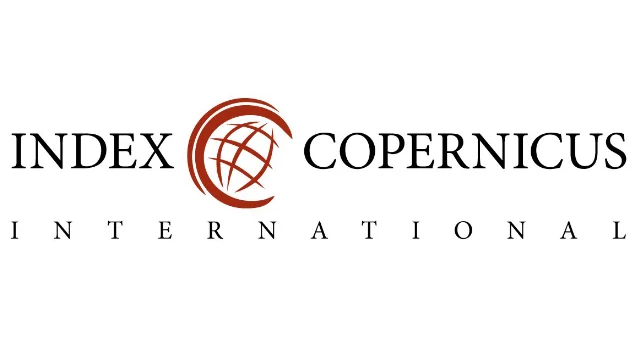Investigating the Role of Machine Learning Algorithms in Customer Segmentation
DOI:
https://doi.org/10.4314/w342gz27Keywords:
Machine Learning, Customer Segmentation, Supervised Learning, Unsupervised Learning, Deep Learning, Explainable AIAbstract
In the rapidly evolving digital landscape, customer segmentation has become a cornerstone of effective marketing strategies, enabling businesses to tailor their approaches based on shared characteristics and behaviours. Traditional segmentation methods, however, often fall short of capturing the complexity and dynamism of modern consumer behaviour due to their reliance on static, rule-based criteria. This paper investigates the transformative role of machine learning (ML) algorithms in enhancing customer segmentation by improving accuracy, personalization, and efficiency. Specifically, it explores supervised learning techniques such as decision trees and support vector machines, which offer predictive capabilities, as well as unsupervised methods like k-means clustering and hierarchical clustering, which uncover hidden patterns without predefined labels. Additionally, deep learning models and neural networks are discussed for their ability to recognize sophisticated patterns and enable hyper-personalized experiences. Despite these advantages, challenges remain, including data privacy concerns, algorithmic bias, and the need for ethical governance. The integration of ML into customer segmentation reshapes business decision-making, offering dynamic profiling, improved customer retention, and higher conversion rates. However, balancing AI-driven insights with human oversight is crucial to ensure alignment with brand values and consumer expectations. This study synthesizes existing research, theoretical foundations, and practical applications to provide a comprehensive understanding of ML's impact on customer segmentation. Furthermore, it highlights emerging trends such as explainable AI (XAI), reinforcement learning, and the integration of IoT data, setting the stage for future advancements in this field.
Most read articles by the same author(s)
- Ayomide Ayomikun Ajiboye, Muslihat Adejoke Gaffari, Onaara Enitan Obamuwagun, Predictive Analytics in Sport Management: Applying Machine Learning Models for Talent Identification and Team Performance Forecasting , Communication In Physical Sciences: Vol. 12 No. 7 (2025): Volume 12 issue 7
Similar Articles
- Humphrey Sam Samuel, Emmanuel Edet Etim, John Paul Shinggu, Bulus. Bako , Machine learning of Rotational spectra analysis in interstellar medium , Communication In Physical Sciences: Vol. 10 No. 1 (2023): VOLUME 10 ISSUE 1
- Dahunsi Samuel Adeyemi , Autonomous Response Systems in Cybersecurity: A Systematic Review of AI-Driven Automation Tools , Communication In Physical Sciences: Vol. 9 No. 4 (2023): VOLUME 9 ISSUE 4
- Imam Akintomiwa Akinlade, Musili Adeyemi Adebayo, Ahmed Olasunkanmi Tijani, Chiamaka Perpetua Ezenwaka, Obafemi Ibrahim Sikiru, Emmanuel Ayomide Oseni, The Role of Machine Learning Models in Optimizing High-Volume Customer Engagement and CRM Transformation , Communication In Physical Sciences: Vol. 8 No. 4 (2022): VOLUME 8 ISSUE 4
- Emmanuel Oluwemimo Falodun, Faith, Technology, and Safety: A Theoretical Framework for Religious Leaders Using Artificial Intelligence to Advocate for Gun Violence Prevention , Communication In Physical Sciences: Vol. 8 No. 4 (2022): VOLUME 8 ISSUE 4
- Ademilola Olowofela Adeleye, Oluwafemi Clement Adeusi, Aminath Bolaji Bello, Israel Ayooluwa Agbo-Adediran, Intelligent Machine Learning Approaches for Data-Driven Cybersecurity and Advanced Protection , Communication In Physical Sciences: Vol. 7 No. 4 (2021): VOLUME 7 ISSUE 4
- David Adetunji Ademilua, Edoise Areghan, AI-Driven Cloud Security Frameworks: Techniques, Challenges, and Lessons from Case Studies , Communication In Physical Sciences: Vol. 8 No. 4 (2022): VOLUME 8 ISSUE 4
- Dahunsi Samuel Adeyemi, Effectiveness of Machine Learning Models in Intrusion Detection Systems: A Systematic Review , Communication In Physical Sciences: Vol. 11 No. 4 (2024): VOLUME 11 ISSUE 4
- Joy Nnenna Okolo, A Review of Machine and Deep Learning Approaches for Enhancing Cybersecurity and Privacy in the Internet of Devices , Communication In Physical Sciences: Vol. 9 No. 4 (2023): VOLUME 9 ISSUE 4
- Florence Omada Ocheme, Hakeem Adewale Sulaimon, Adamu Abubakar Isah, A Deep Neural Network Approach for Cancer Types Classification Using Gene Selection , Communication In Physical Sciences: Vol. 7 No. 4 (2021): VOLUME 7 ISSUE 4
- Yisa Adeniyi Abolade, Bridging Mathematical Foundations and Intelligent Systems: A Statistical and Machine Learning Approach , Communication In Physical Sciences: Vol. 9 No. 4 (2023): VOLUME 9 ISSUE 4
You may also start an advanced similarity search for this article.




